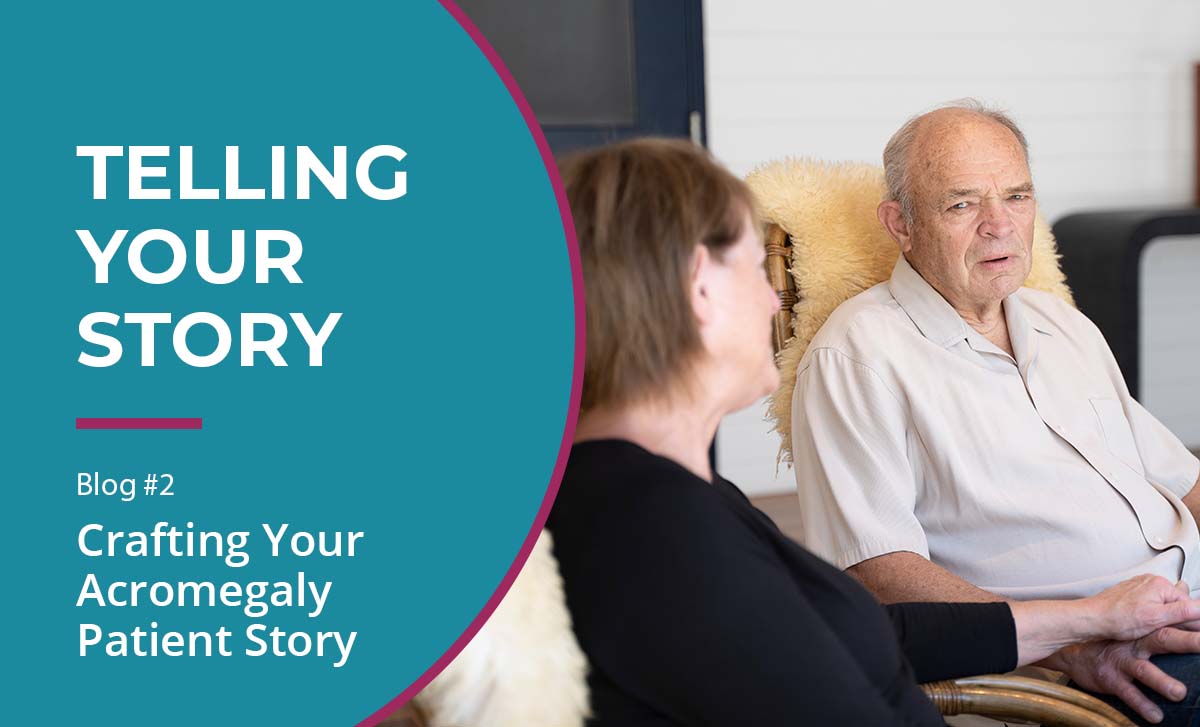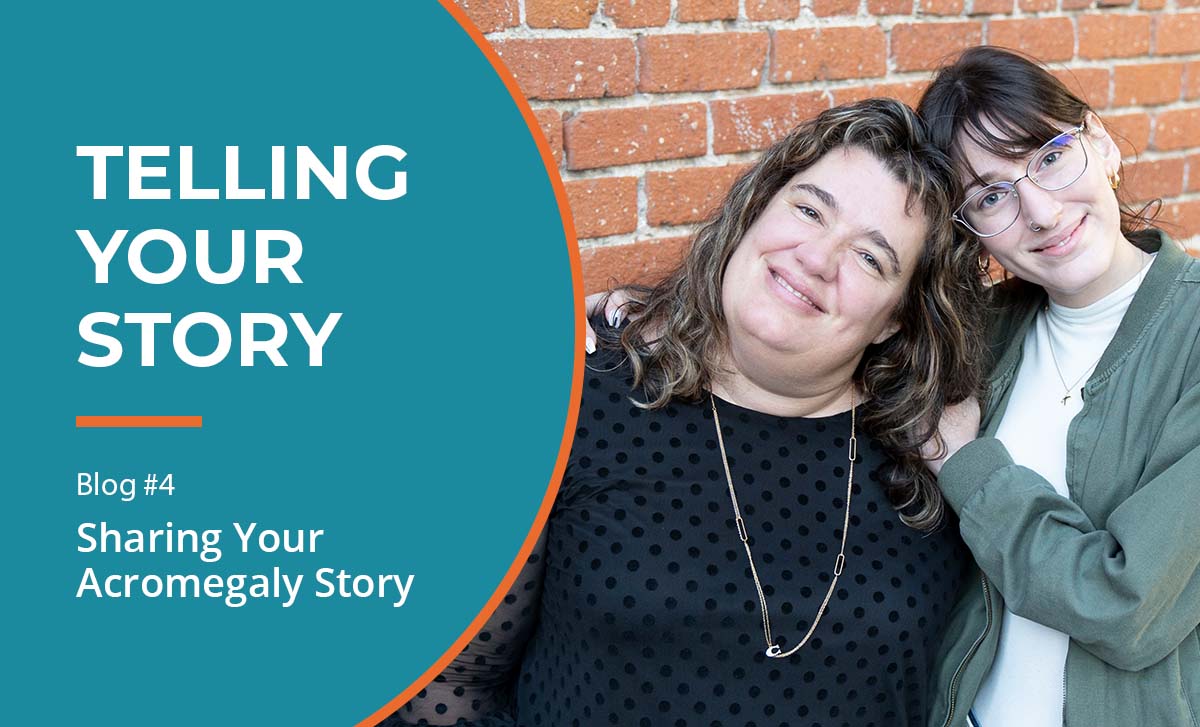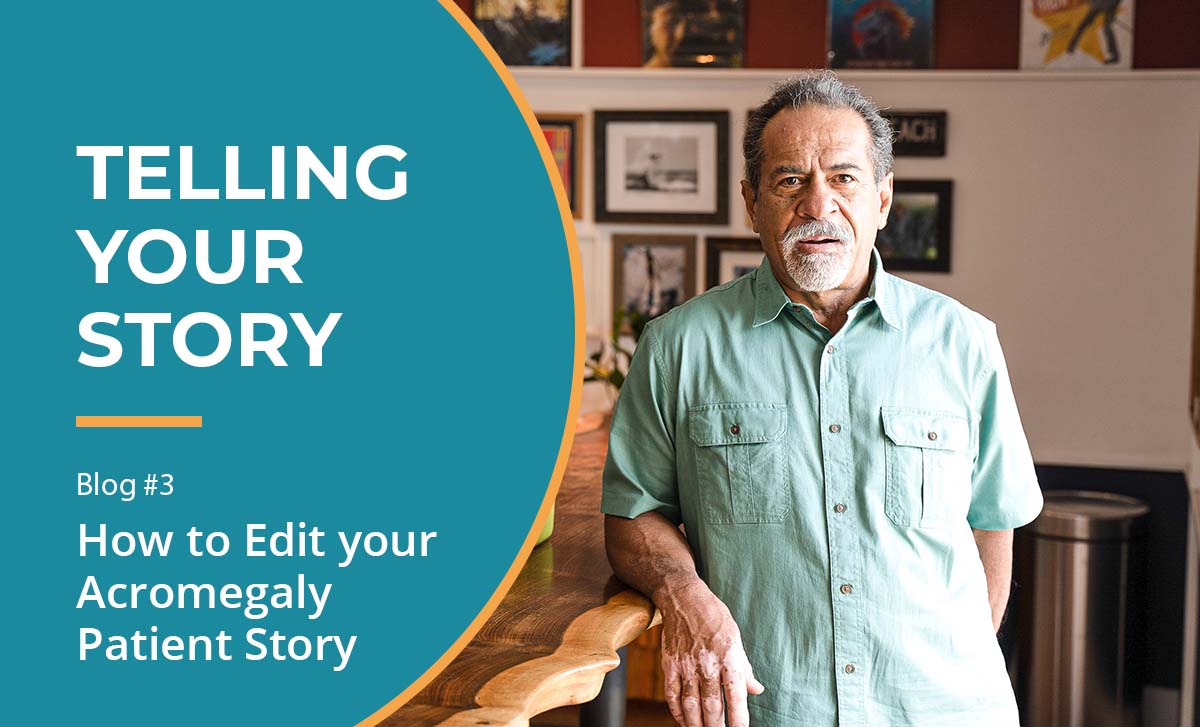Crafting Your Acromegaly Patient Story
If you’ve decided to tell your acromegaly story, your next thought might be, “But how can I even begin to communicate everything about my experience?” Here’s the good news—you don’t have to share everything. Instead, we suggest crafting a short elevator pitch of your story; that is, a story that you can tell in roughly the time it takes for an elevator to get from an upper floor to the lobby.
Having an elevator pitch at the ready can help listeners receive new information quickly without getting overwhelmed—and help you feel confident and in control of your story. So how do you create an effective elevator pitch?
Even though your story should only be about one minute or less, we recommend beginning by getting everything down on paper or a Word doc. Don’t censor yourself—editing will come later. What you ultimately choose to include or omit will likely depend on who you’re talking to (more on this in a subsequent post) and your comfort level.
To organize your thinking and get the creative juices flowing, we put together a sample story outline. This outline takes a chronological approach to storytelling, which is generally easier for people to follow. Not every piece may play a part in your story; feel free to skip anything that doesn’t feel right and move to the next item.
“Having an elevator pitch at the ready can help listeners receive new information quickly without getting overwhelmed—and help you feel confident and in control of your story. “
Now let’s craft your story!
Story Point 1: What is acromegaly?
The first step in developing your story is to share your diagnosis and give people context for the disease. Because acromegaly is a rare disease and largely unknown, you want to give people enough information that they understand it.
Example:
I have a rare endocrine disease called acromegaly caused by a benign tumor on the pituitary gland that secretes excess growth hormone. There are only about 3,000 new cases a year.
Story Point 2: Your symptoms
If your listener needs to know your symptoms, feel free to address them. Again, there’s no need to delve into the details; instead, you can highlight what you experience physically and its implications.
Example:
The symptoms of acromegaly vary. I have larger hands and feet and a bit of a pronounced jawline from excess growth hormone. I also get fatigued quickly and get frequent headaches, so I need to avoid overcommitting myself.
Story Point 3: Your path to diagnosis
This part of your story can bring up negative emotions because the journey to diagnosis is often long and complicated. However, sharing your experience can help the listener(s) relate—who hasn’t felt frustrated and anxious from not being heard or having their questions ignored? Consider discussing how long it took to get diagnosed and who eventually gave the diagnosis.
Example:
I went to all kinds of doctors; a foot doctor, internal medicine, and an ENT for my headaches, but no one could tell me what was happening. After about 15 years, I was referred to an endocrinologist and was finally diagnosed with acromegaly. Unfortunately, this delay in diagnosis isn’t unusual because this disease is so rare.
Story Point 4: How did all of this affect you at the time?
Now’s your chance to tell your listener about how it felt living in the dark about your disease. Don’t be afraid to convey raw emotions if that feels right to you. Providing examples of how you felt and how you reacted can illustrate the effects of a diagnosis.
Example:
Getting diagnosed was so frustrating. Sometimes I’d laugh about it; other times, I’d cry. I was too tired to play with my kids for more than ten minutes. I didn’t want to go out with my friends, either.
Story Point 5: Treatment and its outcome
Let people know what options there are to treat the disease, what steps you took, and whether they were effective.
Example:
When the doctor first discovered my tumor, I had to have surgery to remove it. Now I get a monthly injection to help control my growth hormone levels, and I find that acupuncture helps my headaches. My levels mostly stay within normal range, but the shots are painful. Some overgrowth has gone down since I’ve taken these measures and my energy level is better, for the most part.
Story Point 6: How you cope today
Many people don’t know that acromegaly is a chronic condition that affects the everyday. Let them know what your days look like and how you manage symptoms.
Example:
I take it one day at a time, like everyone else, and some days are better than others. However, swimming, watching what I eat, and meditating all seem to help. I’ve also met some great people on online support sites.
Story Point 7: What should others understand about living with acromegaly?
Now is the time to advocate for yourself. What is one thing you wish your listener would take away from this story?
Example:
I’d ask that you have a little patience with me. My doctor visits take a big chunk out of my day every month. I also need to lie down for an hour or two most afternoons, so I can’t always answer calls and emails right away. Please know I’m not ignoring you.
Story Point 8: How has acromegaly positively influenced your life?
It’s always nice to end a story on an upbeat note. If you can do so and it feels genuine, give it a try. Of course, there’s no need to make up a fairy tale ending, but if you can give people a sense of hope (and even a little humor), it makes them more empathetic and more receptive to what you’re saying.
Example:
It’s been a long road and not something I thought I’d experience. It’s definitely made me more apt to speak my mind and not be a doormat—which has been a real asset at the car dealership!
Story Point 3: Your path to diagnosis
Now that you’ve recorded all your thoughts, let’s put them together and see how the first draft of your story flows.
I have a rare endocrine disease called acromegaly caused by a benign tumor on the pituitary gland that secretes excess growth hormone. There are only about 3,000 new cases a year.
The symptoms of acromegaly vary. I have larger hands and feet and a bit of a pronounced jawline from excess growth hormone. I also get fatigued quickly and get frequent headaches, so I need to avoid overcommitting myself.
I went to all kinds of doctors; a foot doctor, internal medicine, and an ENT for my headaches, but no one could tell me what was happening. After about 15 years, I was referred to an endocrinologist and was finally diagnosed with acromegaly. Unfortunately, this delay in diagnosis isn’t unusual because this disease is so rare.
Getting diagnosed was so frustrating. Sometimes I’d laugh about it; other times, I’d cry. I was too tired to play with my kids for more than ten minutes. I didn’t want to go out with my friends, either.
When the doctor first discovered my tumor, I had to have surgery to remove it. Now I get a monthly injection to help control my growth hormone levels, and I find that acupuncture helps my headaches. My levels mostly stay within normal range, but the shots are painful. Some overgrowth has gone down since I’ve taken these measures and my energy level is better, for the most part
I take it one day at a time, like everyone else, and some days are better than others. However, swimming, watching what I eat, and meditating all seem to help. I’ve also met some great people on online support sites.
I’d ask that you have a little patience with me. My doctor visits take a big chunk out of my day every month. I also need to lie down for an hour or two most afternoons, so I can’t always answer calls and emails right away. Please know I’m not ignoring you.
It’s been a long road and not something I thought I’d experience. It’s definitely made me more apt to speak my mind and not be a doormat—which has been a real asset at the car dealership!
This example flows nicely, but it’s on the long side at just under 400 words which means it’s time to edit. In our next blog, we’ll tackle that phase in our story development journey. In the meantime, if you’d like to read more about how to develop and refine your acromegaly story, check out the full article, “Acromegaly Patient Stories: How to Tell Yours Openly, Genuinely, and Effectively.”
Want more help working through this part of the process? We created two worksheets to give you more hands on practice with structuring your story and then putting it all together. You can download them here.
Additional Resources
References
Dan Charnas, “For a More Ordered Life, Organize Like a Chef, August 11, 2014, https://www.npr.org/sections/thesalt/2014/08/11/338850091/for-a-more-ordered-life-organize-like-a-chef.




